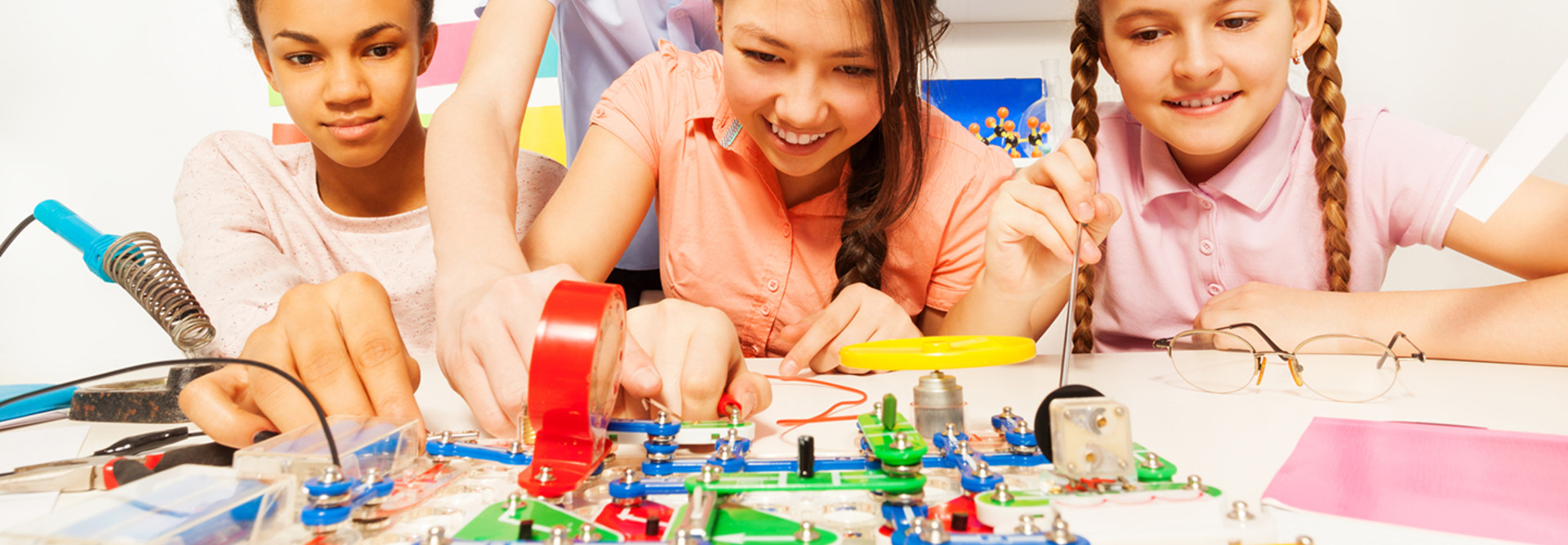ISTE 2017: NMC Horizon Report Focuses on Flexible Learning Spaces and STEAM
Attendees of a Monday afternoon session at ISTE’s 2017 Conference & Expo in San Antonio got a sneak peek at the 2017 Horizon Report’s list of top trends accelerating tech adoption, which included coding as a literacy and redesigning learning spaces.
The report, produced by the New Media Consortium and the Consortium for School Networking, will be released in August. It reveals significant challenges impeding K–12 tech adoption and predicts important developments that are expected in educational technology soon.
The panel — co-moderated by New Media Consortium Executive Director Eden Dahlstrom and CoSN CEO Keith Krueger — included Brandon Petersen, director of professional learning: creative and digital experiences for mindSpark Learning; Lisa Gustinelli, director of innovation and instructional technology at Florida’s Palm Beach State College; and Joan Kay, technology coordinator at Mountain Brook High School in Alabama.
The trends change position on the list each year, Dahlstrom said. Some, like deeper learning approaches, have endured over the years, while others, like the rise of science, technology, engineering, arts and math (STEAM) learning, fall in and out of favor. This year’s list also includes advancing cultures of innovation and a growing focus on measuring learning.
Here is the list in order of predicted adoption rate:
Long-term trends: Adoption in five or more years
- Advancing cultures of innovation
- Deeper learning approaches
Midterm trends: Adoption in the next three to five years
- Growing focus on measuring learning
- Redesigning learning spaces
Short-term trends: Adoption in the next one to two years
- Coding as a literacy
- Rise of STEAM learning
While the 2017 report is currently in development, the dashboard that the panel used to discuss the trends is open to the public, Dahlstrom said.
“All of that history is captured,” she said. “You can go there to see how the sausage is made.”
Gustinelli, who served as an expert panelist, said the group does intense research and holds discussions on the dashboard wiki to narrow down the list of top trends.
“It’s not just 10 or 12 people saying, ‘This is it. This is on the horizon. We know, and we’re the be all and end all.’ It’s a community of people getting together and discussing what we actually see happening,” Gustinelli said.
Challenges to Tech Adoption Include Digital Literacy, Achievement Gap
In addition to predicting future tech trends, the Horizon Report also dives into current challenges that are impeding tech adoption in schools and school districts. Solvable Challenges include authentic learning experiences and improving digital literacy. Difficult Challenges, such as rethinking the roles of teachers and teaching complex thinking, are harder for schools to address. Wicked Challenges, which are hard to define and solve, include the achievement gap and sustaining innovation through leadership changes.
Finally, the report predicts when certain technologies will be widespread in schools. Makerspaces and robotics will take the least time, at one year or less, while analytics technologies and virtual reality are expected to take three to five years, the report states. Artificial intelligence and the Internet of Things bring up the rear, with a time-to-adoption horizon of four to five years.
At the end of the session, Dahlstrom issued a call to action.
“We’d love for you to participate in our future Horizon projects,” she told the audience. “We do the K–12 and higher report every year. If you’re in libraries and museums, we do those every other year. If you’re working on something interesting, we’d love to profile one of the projects that you’re doing at your institution.”
Check out more ISTE 2017 coverage by heading to EdTech’s event page.









